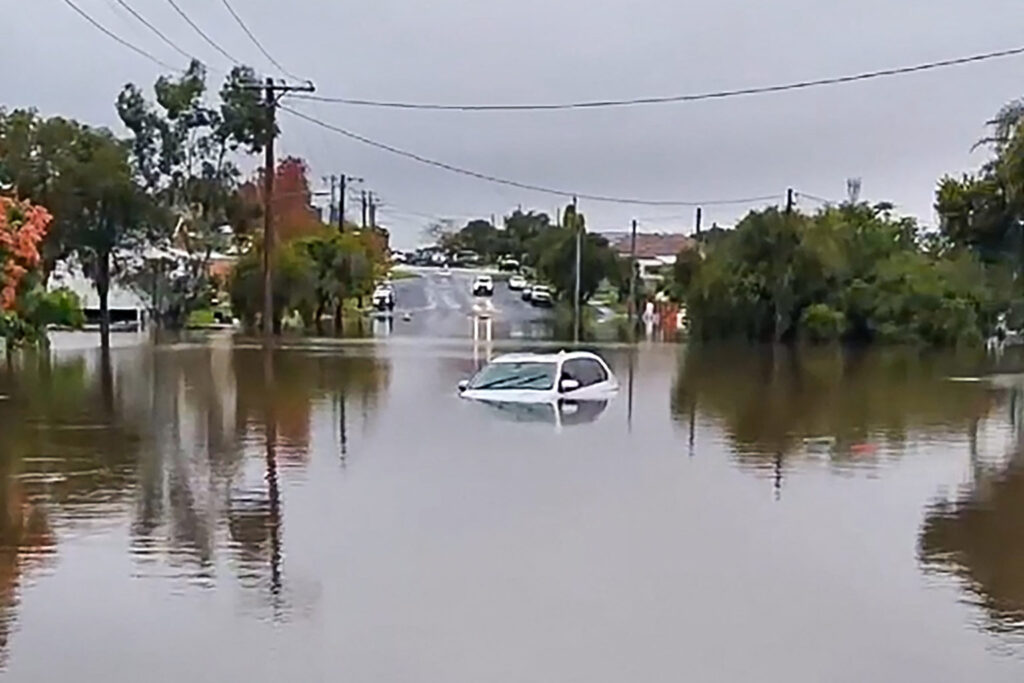
Torrential rains continued to batter eastern Australia on Thursday, stranding more than 50,000 people and leaving two dead as rivers burst their banks and floodwaters swallowed roads and homes.
Emergency crews launched widespread search and rescue operations, pulling bodies from the deluge in the Mid North Coast—a region of rolling hills and river valleys roughly 400 kilometres north of Sydney. Stranded residents clung to rooftops, vehicles, and highway bridges awaiting rescue.
The storms, described as some of the worst in recent memory, dumped more than half a year’s worth of rainfall in just three days, according to the Bureau of Meteorology.
“This has been a terrible natural disaster for the community,” said New South Wales (NSW) Premier Chris Minns, warning that conditions could worsen over the next 24 hours.
In Kempsey, a farming town along the Macleay River, entire areas were cut off without warning. “You often think of rain on a tin roof as calming,” Mayor Kinne Ring said, “but right now it’s deafening and terrifying.”
Nearby in Taree, business owner Jeremy Thornton described the flooding as “gut-wrenching” and among the worst he had witnessed. “We are reliving it every second—hearing the rain, helicopters, and sirens,” he said.
Officials said more than 20,000 people were isolated in Kempsey alone, with floodwaters still rising in some rivers. In dramatic scenes, an elderly couple was airlifted from the roof of their car in Taree, while others sought refuge on highway overpasses before being rescued by helicopter.
Locals also reported livestock carcasses washing up on beaches, swept away from inland pastures by the surging waters.
The federal government has declared the situation a natural disaster, triggering additional support for affected areas. NSW Police said they were still searching for two missing persons.
Australia has faced a string of extreme weather events in recent months, from droughts to cyclones, fueled by what meteorologists describe as “abnormally warm” ocean temperatures. Warmer seas increase atmospheric moisture, often leading to more intense rainfall.
While individual events are difficult to attribute directly to climate change, scientists warn that such disasters are becoming more frequent and severe.
“There’s no doubt climate change is intensifying extreme weather events globally,” said Emergency Management Minister Kristy McBain. “Australia is not immune—we’re seeing more devastating events more often.”
Around 2,500 emergency personnel, supported by boats, helicopters, and drones, have been deployed to assist with rescue efforts. According to the Bureau of Meteorology, some towns recorded over half a metre of rainfall in just three days, though conditions are expected to gradually ease as the storm system moves south.